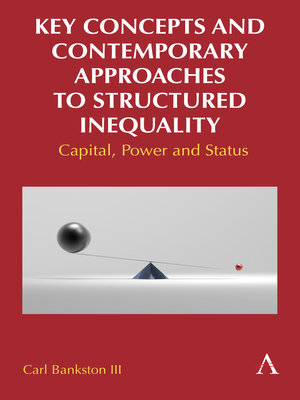Key Concepts and Contemporary Approaches to Structured Inequality
ebook ∣ Capital, Power and Status
By Carl Bankston III

Sign up to save your library
With an OverDrive account, you can save your favorite libraries for at-a-glance information about availability. Find out more about OverDrive accounts.
Find this title in Libby, the library reading app by OverDrive.



Search for a digital library with this title
Title found at these libraries:
| Library Name | Distance |
|---|---|
| Loading... |
This book presents an introduction to the concept of social inequality. It provides a theoretical and historical background to ways of approaching this topic and discusses classic and modern theories of stratification. After identifying the key concepts of this topic, the book lays out evidence on the nature and extent of contemporary social and economic inequality. It then considers categorical forms of inequality, notably, race, class, and gender. Finally, the book examines sources of social inequality and discusses political consequences of stratification and different policy responses.
|This book presentsa comprehensive but succinct overview of the theoretical background, major concepts, perspectives, and contemporary application and debates in social stratification. It begins by considering what stratification means, discussing forms of social inequality as historical constructions. The book then moves into the theories that shape how people think about the division of a social order into different positions. It examines ear;uviews of social inequality by different thinkers. The book then examines how the sociological theories set frameworks for thinking about stratification and suggests an environmental approach as a way of unifying these theories.
After a detailed consideration of the key concepts of stratification, the book focuses on contemporary stratification, using the United States as an example. A growing economic divide is one of the most notable features of the contemporary situation. The main features of this situation are globalization and the dominance of technology-finance as environmental features, an increase in immigration and demographic change, and a cultural divide linked to economic and demographic change.
The book goes further into contemporary stratification with a discussion of the categorical inequalities of race and ethnicity, gender, social class, and intersectional combinations. It then considers possible causes of inequality, including discrimination, culture, education, and social networks. A concluding chapter considers questions of politics and power and possible policy responses to stratification. This chapter ends by encouraging readers to think about the redistribution of social, political, and economic resources.







